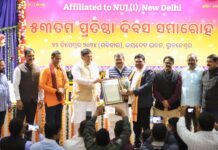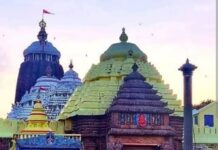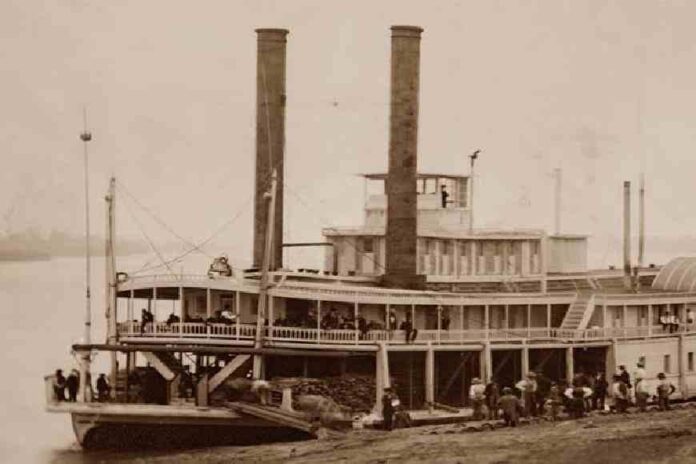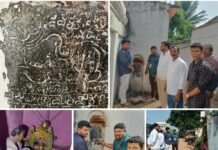By Anil Dhir
BHUBANESWAR: Pilgrimage to Puri had started from the 13th century onwards. The Jagannath temple attracted high caste pilgrims from North India and Bengal; they trickled in small numbers after a long and arduous journey. It was only from the 16th century onwards that the flow of pilgrims increased.
Many affluent peasants, mostly from Bengal, came in large numbers. However, organised and regular mass pilgrimage was only seen after the British annexation of coastal Odisha in 1803 C.E. The annual Rath Yatra, when the trinity came out of the temple, attracted pilgrims from the lower castes, who could otherwise not have darshan of the gods as they were not allowed to enter the temple.
In the early 19th century, English Christian missionaries spread misleading rumours about pilgrims who threw themselves under the massive wheels of the chariots. The cult of Jagannath was painted in dark colours with reports of self-immolations, human sacrifice and other barbaric practices. Numerous travel accounts of extreme practices were published and the word “Juggernaut” was coined to denote a destructive force and sheer barbarity. The word soon acquired a general meaning of an unrelenting force of destruction, a Moloch.
The reconstruction of the old road from Kolkata to Puri commenced in 1809 after a rich Bengali Zamindar had made a very substantial donation to the Bengal government. The Jagannath Sadak provided the British not merely with a comparatively cheap line of communication between Kolkata and their administrative headquarters in Odisha, but also fetched good revenues from the taxation of pilgrims.
The British administrators considered the Jagannath pilgrimage to be among the most dangerous destinations of travel in India. The Rath Yatra coincided with the onset of the monsoons, the rains, slush and insanitary conditions resulted in epidemics. Odisha acquired the reputation of being the ‘home of cholera’ with the maximum incidence of the dreaded disease occurring in the temple town of Puri.
There were innumerable reports of large numbers of people dying from cholera, dysentery and general exhaustion on the ‘Jagannath Sadak’, the main pilgrim route from Bengal. In 1882, W.W.Hunter estimated that the annual death toll of the Jagannath pilgrimage was more than ten thousand. The pilgrimage to Puri epitomized India’s lack of civilization in the eyes of her British rulers on various counts.
Plans about the construction of a railway network in Odisha were mooted as early as the 1860’s when two early British promoters of railway construction in India, Marshman and Stephenson, had taken the assurance of the Dharma Sabha of Calcutta that a pilgrim might ride in a train without losing his caste and the merit of his pilgrimage.
In 1866, the colonial administration had disregarded a ‘Petition of the Inhabitants of Cuttack’ for the construction of a light railway line between Howrah and Puri for the benefit of Jagannath pilgrims. The Famine Commission recommendations harped on the lack of adequate communications and laying of railway was mentioned. Further appeals were made in 1874 and 1878 which too had been turned down. In 1881, Baikuntha Nath De, an influential Zamindar, founded the ‘Balasore Railway Committee’, which sent a carefully prepared memorandum to the government of Bengal asking for the construction of a direct rail link between Calcutta and Madras through the Orissa coastal plains and of a branch line to Puri.
This railway, they argued, would not only provide a faster and safer means of transport for the Jagannath pilgrims, but would also reduce the incidence of cholera epidemics by improving the pilgrims’ lot and could, furthermore, serve as a famine protection line. The large number of pilgrims travelling to Puri, which they estimated to be between five and six hundred thousand annually, would guarantee handsome profits to investors. These appeals were repeated time and again in Oriya and Bengali newspapers from the 1880 onwards.
A few foreign companies took advantage of the growing demand and started steamer services between Kolkata and Chandbali. Steamships which could take on a thousand pilgrims were operated and the services advertised in the papers. The passage fare was expensive and mostly the rich took the steamers. They would send the children and womenfolk on the steamers and they themselves took the Jagannath Sadak. The five to six day sea journey would bring the pilgrims to Chandbali from where they would make their way to Cuttack by palanquins or bullock carts.
McLinn and Company ran a regular service on their steamship ‘Sir John Lawrence’ from Calcutta to Chandbali. On the 25th of May 1887, the ship sailed from Kolkata for Chandbali with 732 passengers, mostly women and a crew of 30 comprising of 6 Englishmen. Nothing was known of the ship for two days, until another ship reported wreckage and dead bodies floating off the coast. The ship had sunk with its entire passengers just a few hours after it had steamed off.
The Times of India of June 4 1887 furnishes the following reports regarding an extraordinarily disastrous cyclone which passed over the Bay of Bengal at the end of May 1887- “The cyclone in the Bay of Bengal seems to have been of much greater severity than was realised on this side, several of the lightships in the Hooghly are missing.
The Sir John Lawrence, with 762 souls on board, is supposed to have become a total loss. Luggage bearing her captain’s name has been washed ashore, and the bodies of many women have been noticed. The bulk of her passengers were women on pilgrimage to Pooree, and the wreck of the Sir John Lawrence, so far as loss of life goes, is one of the most terrible wrecks on record. It will be some time before full details of the cyclone come to hand, though several reports have already been received.”
Most of the women who perished were from well-to-do Kolkata bhadralok families. The few Englishwomen who drowned were wives of high officials. The Report of the Marine Court of Inquiry to the Government of Bengal found that the Sir John Lawrence carrying more than her proper complement of passengers and that the tragedy occurred due to the shipmaster’s irresponsible navigation. This led to an uproar and the demand for the railways to Puri became more strident.
The widely distributed Bengali newspapers took the lead in the campaign and that the tone became more insistent. The Bangabasi wrote: ‘Railway lines have been constructed in all directions for the benefit of Europeans and of their trade. The interests of natives of India have been sacrificed to the interests of Europeans. A railway line to Puri will be hailed with delight by 16 crores of Hindus, for it will lessen the dangers and difficulties, and put an end to their sorrows and fears.’
The Dainik too argued on similar lines: ‘It is the fault of Government that a railway to Puri has not yet been opened. The Darjeeling Railway has been constructed for the convenience of hill-going Europeans; railways have been constructed in Assam for the benefit of tea-planters; and arrangements are in progress for constructing railways to the different sanatoriums of the different Governments. But no railway has yet been constructed for the safety of the hundreds of thousands of Hindu pilgrims to Puri. In vain have the people of Orissa and the whole Hindu Community of 16 crores of people repeatedly prayed for a railway to Puri’.
The public pressure had its effect and the survey for the ‘East Coast Railway’ from Calcutta to Cuttack, with a branch line to Puri, was finally sanctioned. The Line opened in 1899, but the full journey was possible only from 1900 when the bridges over the major rivers of Odisha had been completed.
The only testimonial of this shipwreck is a small marble plaque put up by a group of English women in the Chotulal Ghat at Kolkata in memory of the unfortunate pilgrims who lost their lives at sea. The marble tablet on which is faintly written: “This stone is dedicated by a few English-women to the memory of those pilgrims, mostly women, who perished with ‘Sir John Lawrence’ in the cyclone of 25th May 1887.”
There is another plaque is in Bengali, which is personal in nature and is dedicated to one Shyamcharan Dutta Chowdhury and his wife Nagendra Nandani, who had died in the ill-fated ship. The plaque was set up by their son on the walls of their residence on the day of their shradha. The almost obliterated plaque can be seen to this day on the western end of the Dutta Para Lane in Nimtala area.
Although it is believed that no one survived the shipwreck, there are reports that a few made it ashore. Intach had earlier written to the Government of Odisha to erect a plaque or memorial at Chandbali for the victims of this this shipwreck. It was certainly one of the most tragic shipwrecks with the greatest loss of lives off the Odisha coast. Unfortunately very little is known or has been written about this tragedy.
(The writer Anil Dhir is an Eminent Historian and Heritage Conservationist, and Senior Member of INTACH. Views expressed are personal).






























